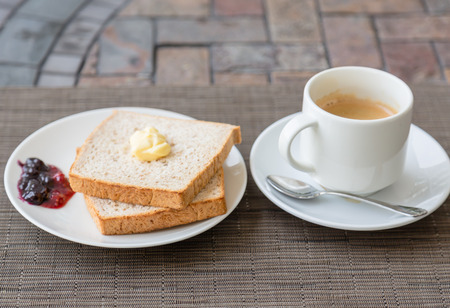Introduction: The Quintessential British Lunch
Few things evoke the spirit of British daytime rituals quite like the classic sandwich. Whether enjoyed alfresco in a London park or savoured in a bustling café tucked away on a cobbled street, the humble sandwich is a mainstay of British culture—a lunchtime staple layered with tradition and taste. Yet, as contemporary palates evolve, there’s an emerging appreciation for pairing these beloved sandwiches with thoughtfully selected coffees. Far beyond merely washing down your cheddar and pickle or coronation chicken, coffee has become a cherished companion, elevating the midday meal into something altogether more refined. This cultural shift speaks to Britain’s growing love affair with artisanal brews and the nuanced art of food pairing, turning an everyday lunch into a moment of considered enjoyment. In exploring the interplay between classic British sandwiches and specialty coffees, we uncover not just flavour harmony but also a delightful convergence of heritage and modern taste.
2. A Brief History of Coffee and British Sandwich Culture
To truly appreciate the art of pairing coffee with classic British sandwiches, it’s essential to delve into the intertwined histories of both these culinary icons. The British sandwich, a staple in lunchboxes and picnics alike, owes its origins to John Montagu, the 4th Earl of Sandwich, who in the 18th century famously asked for his meat to be served between two slices of bread so he could continue gambling without interruption. Meanwhile, coffee houses began springing up across England as early as the mid-1600s, quickly becoming vibrant hubs for intellectual debate and social interaction.
Over the centuries, these two traditions—sandwiches and coffee—have not only thrived but also evolved side by side. By the Victorian era, sandwiches had become an essential part of afternoon teas and railway journeys, while coffee houses transformed into places where writers, politicians, and merchants gathered to exchange ideas. This parallel evolution fostered a unique culture where sandwiches and coffee were no longer merely convenient fare but central elements of British daily life.
Let’s take a closer look at their historical timeline:
| Year | Sandwich Milestone | Coffee House Milestone |
|---|---|---|
| 1762 | The sandwich is popularised by the Earl of Sandwich. | Coffee houses are already well-established as “penny universities.” |
| Victorian Era | Sandwiches become a key feature at afternoon teas and railway buffets. | Coffee consumption grows; establishments diversify menus beyond coffee. |
| 20th Century | Pre-packaged sandwiches revolutionise lunchtime habits. | Café culture flourishes, blending continental espresso bars with British tradition. |
| Modern Day | Sourdoughs, artisan breads, and gourmet fillings take centre stage. | Specialty coffee shops focus on origin beans and bespoke brews. |
This shared history has led to a uniquely British ritual: enjoying a thoughtfully crafted sandwich alongside a carefully selected cup of coffee. Each bite and sip is not just about taste—it’s an invitation to participate in centuries-old traditions that celebrate both innovation and comfort within British food culture.

3. Pairing Principles: How to Match Sandwiches with Coffees
In the sophisticated world of British fare, finding the right coffee to accompany your sandwich is akin to selecting the perfect wine for a meal—it’s all about balance and elevating both elements. Let’s explore the nuanced art of pairing distinctive British sandwiches with coffee, focusing on how flavour profiles and textures harmonise to create a memorable experience.
The Coronation Chicken: A Royal Companion
Coronation Chicken, with its creamy curry mayonnaise and tender chicken, presents a unique blend of mild spice, sweetness from sultanas, and subtle crunch from almonds. To accentuate these layers, opt for a medium-bodied coffee such as a washed Ethiopian or a balanced Colombian brew. These coffees offer gentle citrus and floral notes that lift the sandwich’s richness without overpowering it, while their clean finish refreshes the palate between bites.
The Ploughman’s: Rustic Depth Meets Robust Brews
The Ploughman’s sandwich—a hearty assembly of mature Cheddar, tangy pickle, crisp apple slices, and crusty bread—demands a coffee with enough depth to stand up to its bold flavours. Here, a full-bodied Sumatra or an earthy Kenyan roast shines. The savoury umami and subtle chocolate undertones in these coffees echo the cheese’s intensity and complement the sweet-sour edge of pickle, creating a satisfying interplay that lingers delightfully.
Balancing Flavours & Textures
The secret lies in considering both contrast and harmony. For sandwiches that are creamy or subtly spiced, choose lighter roasts with bright acidity to cut through richness. For robust, savoury fillings, lean toward coffees with more body and earthy notes to enhance depth without clashing.
Textural Synergy
Don’t overlook texture—pair a smooth cappuccino or flat white with crunchy sandwiches for delightful juxtaposition, while filter coffees can emphasise subtler layers in softer breads or fillings. In true British style, let your choices be guided by thoughtful enjoyment rather than rigid rules; after all, every great pairing is part science, part artistry.
4. Exploring Regional British Sandwiches and Coffee Pairings
Britain’s sandwich landscape is as rich and varied as its rolling countryside, each region boasting culinary favourites that tell a story of local taste and tradition. To truly appreciate these classics, pairing them with thoughtfully chosen coffees—whether from nearby artisanal roasters or iconic British blends—can turn a simple lunch into an elevated, sensory experience. Let’s take a tasteful journey through some beloved regional sandwiches and explore the perfect coffee companions for each.
Lancashire Cheese Sandwich & Full-Bodied Filter Coffee
The Lancashire Cheese sandwich, with its crumbly texture and tangy flavour, demands a coffee that can both complement and cut through its richness. Opt for a full-bodied filter coffee, ideally sourced from a northern English roaster. The boldness of the brew highlights the cheese’s earthy notes, while subtle acidity refreshes the palate between bites.
Bacon Butty & Classic British Breakfast Blend
No morning is quite complete without the iconic Bacon Butty—a hearty staple of café counters from London to Leeds. The smoky, salty bacon pairs effortlessly with a robust British breakfast blend. The coffee’s malty undertones balance the savoury profile of the sandwich, making it an ideal companion for those brisk mornings when comfort is key.
Sandwich & Coffee Pairing Guide
| Regional Sandwich | Recommended Coffee | Tasting Notes |
|---|---|---|
| Lancashire Cheese Sandwich | Full-Bodied Filter (Northern Roaster) | Rich, bold; cuts through cheese, enhances tanginess |
| Bacon Butty | British Breakfast Blend | Malty, robust; balances smokiness and saltiness |
| Cornish Pasty Sandwich | Medium Roast Single-Origin | Smooth, nutty; complements pastry and hearty fillings |
| Egg Mayo Bap | Mild Colombian Brew | Creamy, gentle acidity; lifts the richness of egg mayo |
Local Roasters: Adding a Sense of Place
For those keen to embrace Britain’s blossoming coffee scene, seek out independent roasters close to home. A cup brewed from beans roasted in Yorkshire or Cornwall brings not just freshness but also a sense of place to your table—mirroring the provenance celebrated in your sandwich selection. Ultimately, thoughtful pairings bridge local culture and personal taste, turning everyday eating into an artful ritual.
5. Brewing Techniques to Complement the British Palate
When it comes to pairing coffee with classic British sandwiches, how you brew your cup is every bit as important as the beans you select. The British palate often leans towards subtlety—think comforting, well-balanced flavours rather than overwhelming intensity. To achieve this harmony, consider your brewing method carefully. A traditional cafetière (French press) offers a full-bodied brew that feels at home alongside heartier sandwiches like a Coronation Chicken or a Ploughman’s; its gentle extraction preserves the nuanced notes of the coffee without overshadowing the sandwich’s character. For lighter fare such as cucumber or smoked salmon sandwiches, a pour-over method might be more suitable. This technique yields a cleaner cup, highlighting delicate floral and citrusy tones that dance beautifully with the fresh, understated flavours beloved in British lunches.
For those who enjoy a dash of nostalgia, try a stovetop moka pot for an espresso-like richness—perfect when paired with robust fillings like roast beef and horseradish. Remember, water temperature and grind size are your allies: use freshly boiled water off the boil (about 92-94°C) for cafetières and pour-overs to avoid bitterness, and opt for a medium-coarse grind for cafetières or a finer grind for pour-overs to match your desired strength. Lastly, don’t shy away from experimenting with milky coffee classics—like a flat white or café au lait—if you’re serving an egg mayonnaise sandwich or something similarly creamy. These softer brews meld seamlessly with gentle textures and mild flavours, creating a quintessentially British balance of comfort and refinement.
6. A Tasteful Affair: Atmosphere and Entertaining
Crafting the perfect British café or picnic experience is as much about atmosphere and presentation as it is about the thoughtful pairing of coffee and classic sandwiches. The art of hosting begins with a keen eye for detail, ensuring every element works in harmony to evoke warmth, conviviality, and unmistakable British charm.
Tableware: Understated Elegance
Start with timeless tableware that reflects Britain’s love of tradition and quality. Opt for fine bone china cups and saucers—perhaps adorned with delicate florals or subtle gilded rims. For a more contemporary touch, simple stoneware in muted hues brings rustic sophistication to the table. Linen napkins, neatly folded, add refinement, while tiered stands can be used for both sandwiches and sweet treats, lending a nod to the beloved afternoon tea ritual.
Ambience: Setting the Scene
Whether indoors or al fresco, ambience is key. In a café setting, soft lighting from vintage lamps or candles creates intimacy, while gentle jazz or classical music sets a relaxed tone. For picnics, seek out leafy parks or tranquil riversides—classic tartan blankets, woven baskets, and fresh flowers gathered in jam jars capture that quintessentially British spirit. Encourage guests to linger and savour the moment; after all, the British take their leisure seriously.
Coffee & Sandwich Etiquette
No gathering would be complete without observing a few time-honoured customs. Serve coffee in small batches to ensure freshness; offer guests a choice between filter, cafetière (French press), or espresso-based brews according to your sandwich menu. Present milk in a small jug and sugar cubes in a dish with tongs—a nod to proper service. When it comes to sandwiches, cut them into neat triangles or fingers for easy handling, always removing crusts if you’re aiming for elegance.
A final flourish? Engage guests with stories behind your chosen coffees and sandwiches—perhaps highlighting an artisan roaster or a family recipe. This conversational touch embodies true British hospitality: thoughtful, inviting, and effortlessly stylish. With these details attended to, your coffee-and-sandwich affair becomes more than just a meal—it transforms into a celebration of culture, taste, and togetherness.


